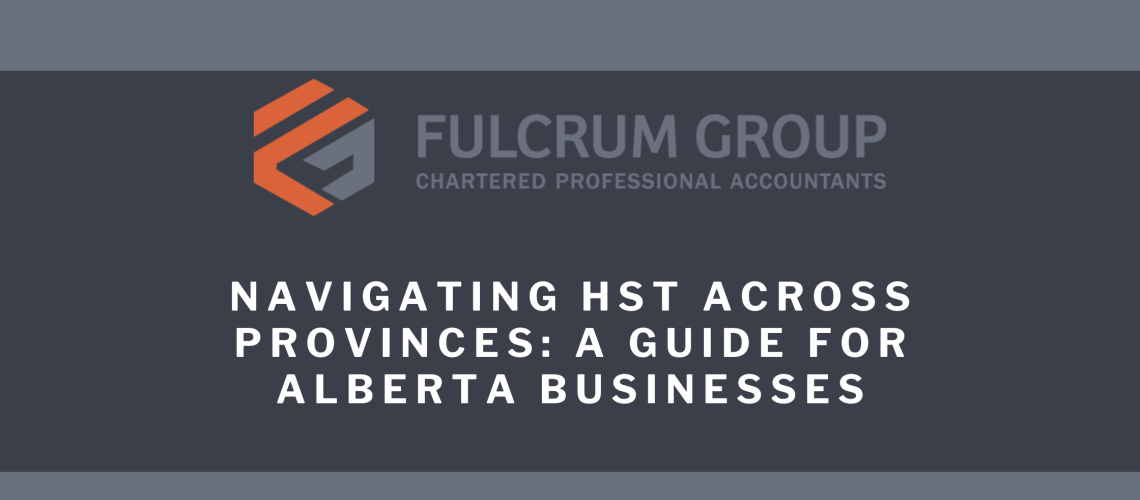Post by Matthew Kozlowski, CPA
In our experience as an accounting firm based in Alberta, we have noticed that many of our clients are not fully aware that they can claim the provincial portion of the Harmonized Sales Tax (HST) as an Input Tax Credit (ITC) when HST is paid on goods.
This lack of awareness can lead to missed opportunities, especially when dealing with transactions involving provinces where HST is applicable. Understanding these nuances is crucial for businesses in Alberta to ensure that all GST/HST Input Tax Credits are claimed appropriately.
It is important note that HST and Provincial Sales Tax (PST) are not the same. The HST merges the federal Goods and Services Tax (GST) with PST, applied in provinces like Ontario and Nova Scotia, and administered federally by the Canada Revenue Agency (CRA). Conversely, the PST, separate from GST and known as QST in Quebec, is levied in provinces like British Columbia and Saskatchewan, with each province setting its rates and handling its administration. The primary difference lies in HST’s amalgamation and federal oversight, contrasting with PST’s independent provincial management.
- Provinces with HST and Their Percentages
Firstly, it’s important to know which provinces charge HST and their respective rates. As of now, the following provinces have HST:
| Province | HST Rate |
| New Brunswick | 15% |
| Newfoundland and Labrador | 15% |
| Nova Scotia | 15% |
| Ontario | 13% |
| Prince Edward Island | 15% |
- HST Implications for Alberta Businesses
For businesses in Alberta (which typically have GST at 5%) the tax implications can be complex, especially when transactions involve provinces that do.
A common scenario to consider is when goods are purchased from an HST province (New Brunswick, Newfoundland and Labrador, Nova Scotia, Ontario, or Prince Edward Island) and delivered to Alberta. This situation should prompt a review of the source documentation to determine if HST (and not just GST) was paid on the invoice.
What type of sales tax (GST or HST) is charged is determined generally by the place of supply. The place of supply is determined on where legal delivery of the goods occur. When legal delivery of the good occurs is typically outlined in the terms of the agreement for the sale of goods.
Example 1 (HST can be claimed):
A manufacturer in Ontario sells a good to a corporation in Alberta. Legal delivery of the good occurs in Ontario at the manufacturer’s premises as per the terms of the sales agreement. The corporation regularly purchases goods from the manufacturer and establishes freight terms with a common carrier for the regular transportation of goods from the manufacturer’s premises to Alberta whenever required. The corporation instructs the manufacturer to contact the carrier directly to advise the carrier whenever goods are ready for pick-up. The carrier invoices the corporation for any transportation service that is provided pursuant to their arrangement.
The good is delivered to the purchaser in Ontario. Therefore, the supply is made in Ontario and is subject to HST at a rate of 13% all of which can be claimed as an ITC.
Example 2 (GST only can be claimed):
A corporation in Ontario sells a good to a purchaser in Alberta. Based on the terms of delivery in the agreement for the supply of the good, legal delivery of the good to the purchaser occurs in Alberta.
Because legal delivery of the good to the purchaser occurs in Alberta, the supply is made in Alberta and is subject to GST at a rate of 5%.
*Note – the above place of supply rules do NOT apply to specified motor vehicles. Specified motor vehicles are generally all motor vehicles except racing cars and any prescribed motor vehicles.
For specified motor vehicles, the place of supply is determined by where the vehicle was registered (other than on a temporary basis).
- Claiming HST as an Input Tax Credit (ITC)
If HST is paid by a registrant business or individual in Alberta and it was incurred for commercial goods used in a commercial sense, then the HST (including the provincial portion) can be claimed as an Input Tax Credit (ITC). This is a significant aspect for businesses as it allows for the recovery of HST paid on business-related purchases.
Key Takeaways
-Always review source documentation for transactions involving provinces with HST to determine tax implications.
-Generally, where the good is legally delivered is the place of supply and that is the relevant GST/HST tax rate that should be used.
-If you are a GST/HST registrant and have paid HST on a business-related item you can claim the full amount of HST (including the provincial portion) on your GST return.
For any further questions or clarifications, please contact our office at 780-532-4641 or e-mail office@fulcrumgroup.ca



